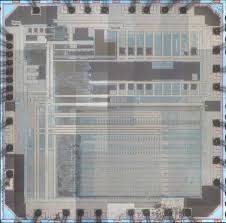Discover Microcontroller MCU Texas Instruments MSP430F2131

Discover Microcontroller MCU Texas Instruments MSP430F2131
Discover Microcontroller MCU Texas Instruments MSP430F2131 embedded firmware, and then readout it from both eeprom and flash memory which will be the same as original version:
Low Supply Voltage Range 1.8 V to 3.6 V
Ultralow-Power Consumption
− Active Mode: 250 µA at 1 MHz, 2.2 V
− Standby Mode: 0.7 µA
− Off Mode (RAM Retention): 0.1 µA
Ultrafast Wake-Up From Standby Mode in less than 1 µs
16-Bit RISC Architecture, 62.5 ns
Instruction Cycle Time
Serial Onboard Programming,
No External Programming Voltage Needed
Programmable Code Protection by Security Fuse
Bootstrap Loader
On Chip Emulation Module
Family Members Include:
Basic Clock Module Configurations:
− Internal Frequencies up to 16MHz with
4 calibrated Frequencies to ±1%
− 32-kHz Crystal
− High-Frequency Crystal up to 16MHz
− Resonator
− External Digital Clock Source
16-Bit Timer_A With Three
Capture/Compare Registers
On-Chip Comparator for Analog Signal
Compare Function or Slope A/D
Conversion
Brownout Detector
MSP430F2111: 2KB + 256B Flash Memory 128B RAM
MSP430F2121: 4KB + 256B Flash Memory 256B RAM
MSP430F2131: 8KB + 256B Flash Memory 256B RAM
Available in a 20-Pin Plastic Small-Outline
Wide Body (SOWB) Package, 20-Pin Plastic
Small-Outline Thin (TSSOP) Package,
20-Pin TVSOP and 24-Pin QFN
For Complete Module Descriptions, Refer to the MSP430x2xx Family User’s Guide
description
The Texas Instruments MSP430 family of ultralow power microcontrollers consist of several devices featuring different sets of peripherals targeted for various applications. The architecture, combined with five low power modes is optimized to achieve extended battery life in portable measurement applications. The device features a powerful 16-bit RISC CPU, 16-bit registers, and constant generators that attribute to maximum code efficiency.
The digitally controlled oscillator (DCO) allows wake-up from low-power modes to active mode in less than 1µs. The MSP430x21x1 series is an ultralow-power mixed signal microcontroller with a built-in 16-bit timer, versatile analog comparator and sixteen I/O pins. Typical applications include sensor systems that capture analog signals, convert them to digital values, and then process the data for display or for transmission to a host system. Stand alone RF sensor front end is another area of application. The analog comparator provides slope A/D conversion capability.

